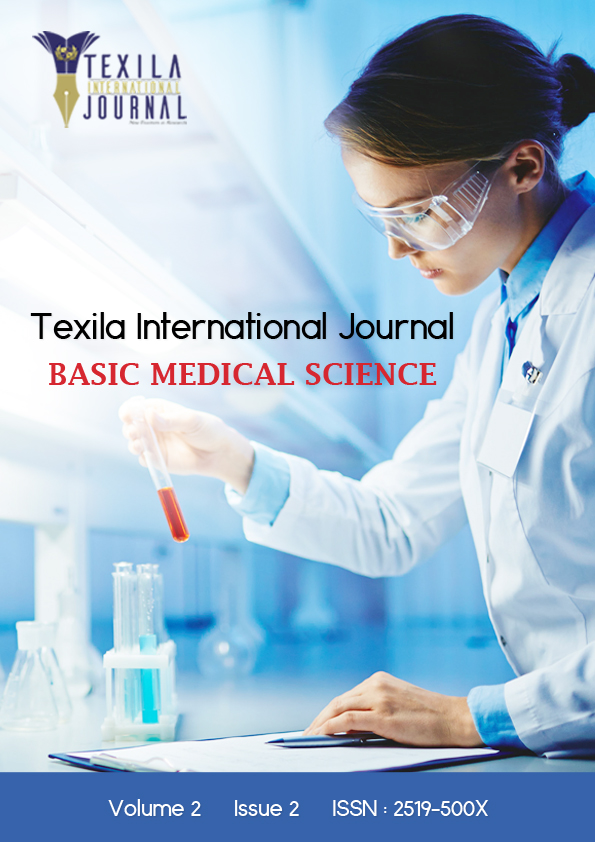References:
[1].
Burcelin, R., Knauf, C., & Cani, P.
D. Pancreatic alpha-cell dysfunction in diabetes. Diabetes Metab 2008; 34 (Suppl
2): 49−55.
[2].
Barroso, I. Genetics of type 2 diabetes.
Diabet Med 2005; 22: 517−535.
[3].
Brownlee, M. Biochemistry and molecular
cell biology of diabetic complications. Nature 2001; 414, 813–820.
[4].
Black, C., Donnelly, P., McIntyre, L.,
Royle, P.L., Shepherd, J.P., Thomas, S. Meglitinide analogues for type 2
diabetes mellitus. Cochrane Database of Systematic Reviews 2007.
[5].
Brown RJ, Walter M, Rother KI. Ingestion
of diet soda before a glucose load augments glucagon like peptide-1. Diab care
2009; 32(12):2184–2186.
[6].
Brown RJ, et al. Artificial sweeteners:
a systematic review of metabolic effects in youth. Int J Pediatr Obes. 2010;
5:305–312.
[7].
Buchanan, T. A., Metzger, B. E.,
Freinkel, N., & Bergman, R. N. Insulin sensitivity and B-cell
responsiveness to glucose during late pregnancy in lean and moderately obese
women with normal glucose tolerance or mild gestational diabetes. Am J Obstet
Gynecol 1990; 162: 1008−1014.
[8].
Chen, M., Bergman, R. N., & Porte,
D. Insulin resistance and [beta]-cell dysfunction in aging: the importance of
dietary carbohydrate. J Clin Endocrinol Metab 1988; 67: 951−957.
[9].
Dhingra R, Sullivan L, Jacques PF, et
al. Soft drink consumption and risk of developing cardio metabolic risk factors
and the metabolic syndrome in middle-aged adults in the community. Circulation
2007; 116(5):480–488.
[10]. Del,
P.S., Bianchi, C., Marchetti, P. Beta-cell function and anti-diabetic
pharmacotherapy. Diabetes/Metabolism Research and Reviews 2007; 23: 518–527.
[11]. De
Koning L, et al. Sugar-sweetened and artificially sweetened beverage consumption
and risk of type 2 diabetes in men. Am J Clin Nutr. 2011; 93:1321–1327.
[12]. Dunlop,
M. Aldose reductase and the role of the polyol pathway in diabetic nephropathy.
Kidney International 2000; 77: 3–12.
[13]. DeFronzo,
R. A. (1979). Glucose intolerance of aging. Evidence for tissue insensitivity
to insulin. Diabetes 1979; 28: 1095−1101.
[14]. De
Groot, M., Anderson, R., Freedland, K. E., Clouse, R. E., & Lustman, P. J.
Association of depression and diabetes complications: a meta-analysis.
Psychosom Med 2001; 63: 619−630.
[15]. Fowler
SP, et al. Fueling the obesity epidemic? Artificially sweetened beverage use
and long-term weight gain. Obesity (Silver Spring). 2008; 16:1894–1900.
[16]. Fagherazzi
G, et al. Consumption of artificially and sugar-sweetened beverages and
incident type 2 diabetes in the Etude Epidemiologique aupres des femmes de la
Mutuelle Generale de l’Education Nationale-European Prospective Investigation
into Cancer and Nutrition cohort. Am J Clin Nutr. 2013; 97:517–523
[17]. Facchini,
F. S., Hua, N., Abbasi, F., & Reaven, G. M. Insulin resistance as a
predictor of age-related diseases. J Clin Endocrinol Metab 2001; 86: 3574−3578.
[18]. Goodyear,
L. J., & Kahn, B. B. Exercise, glucose transport, and insulin sensitivity.
Annu Rev Med 1998; 49: 235−261.
[19]. Hu,
F.B., and Malik, V.S. Sugar-sweetened beverages and risk of obesity and type 2
diabetes: epidemiologic evidence. Physiol. Behav 2010; 100: 47–54.
[20]. Hoogwerf,
B.J., Complications of diabetes mellitus. International Journal of Diabetes in
Developing Countries 2005; 25: 63–69.
[21]. Hoerger,
T.J., Segel, J.E., Gregg, E.W., Saaddine, J.B. Is glycemic control improving in
U.S. adults? Diabetes Care 2008; 31, 81–86.
[22]. Hull,
R. L., Westermark, G. T., Westermark, P., & Kahn, S. E. (2004). Islet
amyloid: a critical entity in the pathogenesis of type 2 diabetes. J Clin
Endocrinol Metab 2004; 89: 3629−3643.
[23]. Jacobson,
A. M. Impact of improved glycemic control on quality of life in patients with
diabetes. Endocr Pract 2004; 10: 502−508.
[24]. Jang
HJ, Kokrashvili Z, Theodorakis MJ, et al. Gut-expressed gustducin and taste
receptors regulate secretion of glucagonlike peptide-1. Proc Natl Acad Sci USA
2007; 104(38):15069–15074.
[25]. Kahn,
S. E. (1993). Quantification of the relationship between insulin sensitivity
and Bcell function in human subjects. Evidence for a hyperbolic function.
Diabetes 1993; 42: 1663−1672.
[26]. Koshikawa,
M., Mukoyama, M., Mori, K., Suganami, T., Sawai, K., Yoshioka, T., Nagae, T.,
Yokoi, H., Kawachi, H., Shimizu, F., Sugawara, A., Nakao, K. Role of p38
mitogen-activated protein kinase activation in podocyte injury and proteinuria
in experimental nephrotic syndrome. Journal of American Society of Nephrology
2005; 16: 2690–2701.
[27]. Kutner,
N.G., Johansen, K.L., Zhang, R., Huang, Y., Amaral, S. Perspectives on the new
kidney disease education benefit: early awareness, race and kidney transplant
access in a USRDS study. American Journal of Transplantion 2012; 12, 1017–1023.
[28]. Kahn,
S. E., Haffner, S. M., Heise, M. A., Herman, W. H., Holman, R. R., Jones, N.
P., et al. Glycemic durability of rosiglitazone, metformin, or glyburide
monotherapy. N Engl J Med 2006; 355: 2427−2443.
[29]. Laska
MN, et al. Longitudinal associations between key dietary behaviors and weight
gain over time: transitions through the adolescent years. Obesity (Silver
Spring). 2012; 20:118–125.
[30]. Lutsey
PL, Steffen LM, Stevens J. Dietary intake and the development of the metabolic
syndrome: the Atherosclerosis Risk in Communities study. Circulation 2008;
117(6):754–61.
[31]. Lee,
M.-J., Feliers, D., Mariappan, M.M., Sataranatarajan, K., Sataranatarajan, K.,
Mahimainathan, L., Musi, N., Foretz, M., Viollet, B., Weinberg, J.M.,
Choudhury, G.G., Kasinath, B.S. A role for AMP activated protein kinase in
diabetes-induced renal hypertrophy. American Journal of Physiology – Renal
Physiology 2007; 292: 617– 627.
[32]. Meier,
M., Menne, J., Park, J.K., Haller, H. Nailing down PKC isoform specificity in
diabetic nephropathy two's company, three's a crowd. Nephrology Dialysis
Transplant 2007; 22: 2421–2425.
[33]. Mackenzie
T, Brooks B, O'Connor G. Beverage intake, diabetes, and glucose control of
adults in America. Ann Epidemiol 2006; 16(9):688–691.
[34]. McNaughton
SA, Mishra GD, Brunner EJ. Dietary patterns, insulin resistance, and incidence
of type 2 diabetes in the Whitehall II study. Diabetes Care 2008;
31(7):1343–1348.
[35]. Mooney,
R. A. Suppressors of cytokine signaling-1 and -6 associate with and inhibit the
insulin receptor. A potential mechanism for cytokine-mediated insulin
resistance. J Biol Chem 2001; 276: 25889−25893.
[36]. Mace
OJ, Affleck J, Patel N, et al. Sweet taste receptors in rat small intestine
stimulate glucose absorption through apical GLUT2. J Physiol 2007; 582(Pt
1):379–392.
[37]. Nelson
G, Hoon MA, Chandrashekar J, et al. Mammalian sweet taste receptors. Cell 2001;
106(3): 381–390.
[38]. Perley,
M., & Kipnis, D. M. Plasma insulin responses to glucose and tolbutamide of
normal weight and obese diabetic and nondiabetic subjects. Diabetes 1966; 15:
867−874.
[39]. Pepino
MY, Tiemann CD, Patterson BW, Wice BM, Klein S. Sucralose affects glycemic and
hormonal responses to an oral glucose load. Diabetes care. 2013;
36(9):2530–2535.
[40]. Polonsky,
K. S., Given, B. D., & Van Cauter, E. Twenty-four-hour profiles and patterns
of insulin secretion in normal and obese subjects. J Clin Invest 1988; 81:
442−448.
[41]. Qiu,
C., Cotch, M.F., Sigurdsson, S., Garcia, M., Klein, R., Jonasson, F. Retinal
and cerebral microvascular signs and diabetes the age, gene/environment
susceptibility-reykjavik study. Diabetes 2008; 57: 1645–1650.
[42]. Reaven,
G.M. Role of insulin resistance in human disease. Diabetes 1988; 37: 1595−1607.
[43]. Robertson,
R. P., Harmon, J., Tran, P. O., Tanaka, Y., & Takahashi, H. Glucose
toxicity in beta-cells: type 2 diabetes, good radicals gone bad, and the
glutathione connection. Diabetes 2003; 52: 581−587.
[44]. Resnikoff,
S., Pascolini, D., Etya'ale, D., Kocur, I., Pararajasekaram, R., Pokharel,
G.P., Mariotti, S.P. Global data on visual impairment in the year 2002.
Bulletin of the World Health Organization 2004; 82: 844–851.Robertson, R. P.,
Harmon, J., Tran, P. O., & Poitout, V. Beta-cell glucose toxicity,
lipotoxicity, and chronic oxidative stress in type 2 diabetes. Diabetes 2004;
53 (Suppl 1): 119−124.
[45]. Resnick,
H.E., Howard, B.V. Diabetes and cardiovascular disease. Annual Review of
Medicine 2002; 53: 245–267.
[46]. Romaguera
D, et al. Consumption of sweet beverages and type 2 diabetes incidence in
European adults: results from EPIC-InterAct. Diabetologia. 2013; 56:1520–1530.
[47]. Rui,
L., Yuan, M., Frantz, D., Shoelson, S., & White, M. F. SOCS-1 and SOCS-3
block insulin signaling by ubiquitin-mediated degradation of IRS1 and IRS2. J
Biol Chem 2002; 277: 42394−42398.
[48]. Swithers,
S.E., Sample, C.H., and Davidson, T.L. Adverse effects of highintensity
sweeteners on energy intake and weight control in male and obesity-prone female
rats. Behav. Neurosci 2013; 127: 262–274.
[49]. Suez,
J., Korem, T., Zeevi, D., Zilberman-Schapira, G., Thaiss, C.A., Maza, O., et
al. Artificial sweeteners induce glucose intolerance by altering the gut
microbiota. Nature 2014; 514: 181–186.
[50]. Saydah,
S., Bullard, K.M., Cheng, Y., Ali, M.K., Gregg, E.W., Geiss, L., and
Imperatore, G. Trends in cardiovascular disease risk factors by obesity level
in adults in the United States, NHANES 1999–2010. Obesity, 2014; 22: 1888–
1895.
[51]. Stumvoll,
M., Goldstein, B. J., & van Haeften, T. W. Type 2 diabetes: principles of
pathogenesis and therapy. Lancet 2005; 365: 1333−1346.
[52]. Shulman,
G. I. Cellular mechanisms of insulin resistance. J Clin Invest 2000; 106:
171−176.
[53]. Stumvoll,
M., Goldstein, B. J., & van Haeften, T. W. Type 2 diabetes: principles of
pathogenesis and therapy. Lancet 2005; 365: 1333−1346.
[54]. Suez
J, Korem T, Zeevi D, Zilberman-Schapira G, Thaiss CA, Maza O, et al. Artificial
sweeteners induce glucose intolerance by altering the gut microbiota. Nature.
2014; 514(7521):181–186.
[55]. Shanik,
M. H., Xu, Y., Skrha, J., Dankner, R., Zick, Y., & Roth, J. Insulin resistance
and hyperinsulinemia: is hyperinsulinemia the cart or the horse? Diabetes Care
2008; 31: 262−268.
[56]. Tesfaye,
S. Recent advances in the management of diabetic symmetrical polyneuropathy.
Journal of Diabetes Investigation 2010; 2: 33–42.
[57]. Valko,
M., Leibfritz, D., Moncol, J., Cronin, M.T., Mazur, M., Telser, J. Free
radicals and antioxidants in normal physiological functions and human disease.
The International Journal of Biochemistry & Cell Biology 2007; 39: 44–84.
[58]. Wellen,
K. E., & Hotamisligil, G. S. Inflammation, stress, and diabetes. J Clin
Invest 2005; 115: 1111−1119.
[59]. Wolf,
I., Sadetzki, S., Catane, R., Karasik, A., Kaufman, B. Diabetes mellitus and
breast cancer. The Lancet Oncology 2005; 6: 103–111.
[60]. Yuan,
S.Y., Breslin, J.W., Perrin, R., Gaudreault, N., Guo, M., Kargozaran, H.
Microvascular permeability in diabetes and insulin resistance. Microcirculation
2007; 14: 363–373.
[61]. Yang
Q. Gain weight by “going diet?” Artificial sweeteners and the neurobiology of
sugar cravings: Neuroscience 2010. Yale J Biol Med. 2010; 83:101–108.

 Bio Activity of Sesbania Grandiflora against Hepatic Damage in Albino RatsAuthor: Padmalochana K.DOI: 10.21522./TIJBMS.2016.02.02.Art001
Bio Activity of Sesbania Grandiflora against Hepatic Damage in Albino RatsAuthor: Padmalochana K.DOI: 10.21522./TIJBMS.2016.02.02.Art001 Nephroprotective Potential Compounds from Leaves Extracts of Andrographis PaniculataAuthor: Padmalochana K.DOI: 10.21522./TIJBMS.2016.02.02.Art003
Nephroprotective Potential Compounds from Leaves Extracts of Andrographis PaniculataAuthor: Padmalochana K.DOI: 10.21522./TIJBMS.2016.02.02.Art003 Pharmacological Activities of Compound Present in Cassia Auriculata by Pass Prediction MethodAuthor: A. Chandra MohanDOI: 10.21522./TIJBMS.2016.02.02.Art004
Pharmacological Activities of Compound Present in Cassia Auriculata by Pass Prediction MethodAuthor: A. Chandra MohanDOI: 10.21522./TIJBMS.2016.02.02.Art004 Analysis of Total Phenol, Cellulose and Tannin Content by Using Different Parameters in Ethanol Extract of Pomegranate PeelAuthor: Vijayalakshmi TDOI: 10.21522./TIJBMS.2016.02.02.Art005
Analysis of Total Phenol, Cellulose and Tannin Content by Using Different Parameters in Ethanol Extract of Pomegranate PeelAuthor: Vijayalakshmi TDOI: 10.21522./TIJBMS.2016.02.02.Art005 Reflective Assessment of Learning Outcomes [RALO] in Basic Medical Sciences Subjects - [TAU MODEL]Author: Arulsamy AnandDOI: 10.21522./TIJBMS.2016.02.02.Art006
Reflective Assessment of Learning Outcomes [RALO] in Basic Medical Sciences Subjects - [TAU MODEL]Author: Arulsamy AnandDOI: 10.21522./TIJBMS.2016.02.02.Art006 The Human Inter Vertebral Disc - A Histological ApproachAuthor: Anuradha KDOI: 10.21522./TIJBMS.2016.02.02.Art007
The Human Inter Vertebral Disc - A Histological ApproachAuthor: Anuradha KDOI: 10.21522./TIJBMS.2016.02.02.Art007 Assess the Pre Test Knowledge and Practice of Post-Operative Exercises among Abdominal Surgery Patients Before Video Assisted TeachingAuthor: Chakrapani CheekavoluDOI: 10.21522./TIJBMS.2016.02.02.Art008
Assess the Pre Test Knowledge and Practice of Post-Operative Exercises among Abdominal Surgery Patients Before Video Assisted TeachingAuthor: Chakrapani CheekavoluDOI: 10.21522./TIJBMS.2016.02.02.Art008 Role of Artificial Sweeteners in Development of Type 2 Diabetes Mellitus (DM): A ReviewAuthor: Jagan NadipellyDOI: 10.21522./TIJBMS.2016.02.02.Art009
Role of Artificial Sweeteners in Development of Type 2 Diabetes Mellitus (DM): A ReviewAuthor: Jagan NadipellyDOI: 10.21522./TIJBMS.2016.02.02.Art009
